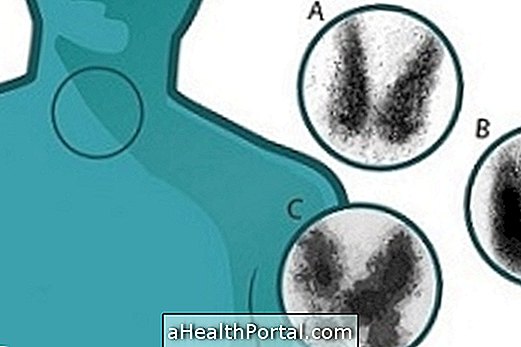Leukocytes, also known as white blood cells, are the cells responsible for defending the body against infections, diseases, allergies and colds, being part of the immunity of each person.
These cells are carried in the blood to be used whenever a virus, a bacterium, or any other foreign body enters the human body, eliminating them and preventing them from causing health problems.
The normal value of leukocytes in the blood ranges from 4500 to 11000 leukocytes / mm 3 of blood in adults, however this value may be altered due to some situations such as recent infections, stress or AIDS, for example. Understand how the leukogram is done and how to interpret the results.

Causes of high leukocytes
Increased leukocytes, also known as leukocytosis, are characterized by a value greater than 11, 000 / mm 3 in the blood test.
- Possible causes: recent infection or illness, excessive stress, side effect of a medication, allergies, rheumatoid arthritis, myelofibrosis or leukemia, for example;
- What are the symptoms? These are rare, but may include fever above 38 ° C, dizziness, difficulty breathing, tingling in the arms and legs and loss of appetite;
In these cases, a general practitioner should be consulted to diagnose the cause of the increased leukocytes since some specific treatment with antibiotics or corticosteroids may be necessary.
Causes of low white blood cells
Low leukocytes, also called leukopenia, arise when there are less than 4, 500 / mm³ leucocytes in the blood test.
- Some causes: anemia, use of antibiotics and diuretics, poor nutrition or weak immune system caused by HIV, leukemia, lupus or chemotherapy, for example;
- What are the symptoms: Excessive tiredness, recurrent infections and colds, constant fever, headaches and abdominal pain;
If this happens, it is recommended to go to the general practitioner to diagnose the cause of the disease. However, in some cases, it is normal to have low leukocytes without a serious cause, and care should be taken only to avoid colds and flu, which can happen more easily. See which symptoms may indicate low immunity.
What can be leukocytes in the urine
It is normal to present leukocytes in the urine as they are eliminated in the urine when their life span is over. However, during urinary infections or in situations of more serious diseases, such as cancer, the values of leukocytes in the urine usually increase a lot.
Generally, high urine leukocytes generate signs and symptoms such as urine with foam, fever, chills or blood in the urine, for example. In these cases, the general practitioner or a nephrologist should be consulted to diagnose the cause and initiate appropriate treatment. Learn what foamy urine can mean.
In addition, high white blood cells in the urine can also be a sign of pregnancy, especially when accompanied by an increase in the number of proteins in the urine. In these cases one should take the pregnancy test or consult the gynecologist to avoid false diagnosis.























